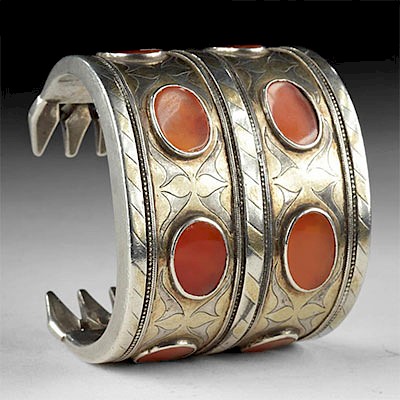Anasazi Pottery Mug - Mesa Verde Museum
Lot 134g
About Seller
Artemis Fine Arts
686 S Taylor Ave, Ste 106
Louisville, CO 80027
United States
Selling antiquities, ancient and ethnographic art online since 1993, Artemis Gallery specializes in Classical Antiquities (Egyptian, Greek, Roman, Near Eastern), Asian, Pre-Columbian, African / Tribal / Oceanographic art. Our extensive inventory includes pottery, stone, metal, wood, glass and textil...Read more
Estimate:
$600 - $900
Absentee vs Live bid
Two ways to bid:
- Leave a max absentee bid and the platform will bid on your behalf up to your maximum bid during the live auction.
- Bid live during the auction and your bids will be submitted real-time to the auctioneer.
Bid Increments
| Price | Bid Increment |
|---|---|
| $0 | $25 |
| $300 | $50 |
| $1,000 | $100 |
| $2,000 | $250 |
| $5,000 | $500 |
| $10,000 | $1,000 |
| $20,000 | $2,500 |
| $50,000 | $5,000 |
| $100,000 | $10,000 |
| $200,000 | $20,000 |
About Auction
By Artemis Fine Arts
Aug 6, 2019
Set Reminder
2019-08-06 11:00:00
2019-08-06 11:00:00
America/New_York
Bidsquare
Bidsquare : VARIETY SALE | Antiquities & Ethnographic Art
https://www.bidsquare.com/auctions/artemis-gallery/variety-sale-antiquities-ethnographic-art-4326
Around the world & back in time - be amazed at the treasures you will find. Antiquities from Egypt, Greece, Italy and the Near East, Asian, Pre-Columbian, African / Tribal / Oceanic, Native American, Spanish Colonial, Russian Icons, Fine Art, much more! All categories, all price ranges... Artemis Fine Arts info@artemisgallery.com
Around the world & back in time - be amazed at the treasures you will find. Antiquities from Egypt, Greece, Italy and the Near East, Asian, Pre-Columbian, African / Tribal / Oceanic, Native American, Spanish Colonial, Russian Icons, Fine Art, much more! All categories, all price ranges... Artemis Fine Arts info@artemisgallery.com
- Lot Description
Native American, Southwestern USA, Colorado, Anasazi/Ancestral Puebloans, ca. 1200 to 1300 CE. A charming mug with interlocking geometric patterns of zigzags, diamonds, squares, and lines, including a thick line horizontally through the center of the motif which may represent a boundary of water - a river through the heart of the motif, which some researchers believe symbolizes the dramatic Southwestern landscape. The black-on-white motifs (which when fired became more ocher yellow-on-white on this example, a relatively rare result of the iron in the black pigment interacting with the heat of the fire) are part of the Mesa Verde tradition. Size: 4.1" W x 3.1" H (10.4 cm x 7.9 cm)
Vessels like this one were made from a gray or white clay with angular fragments of temper and this one has a pearly gray-white slip that was then overpainted with a black pigment made from carbon. They were made by women who lived in cliff dwellings like those seen at Mesa Verde National Park - indeed at the Park, there is a large house containing 94 rooms, a kiva, and a water reservoir, known as Mug House because its European discoverers, Charles Mason and the Wetherill brothers, found three mugs hung in one of the rooms from a rope of woven yucca.
Provenance: ex-Joan Shaw collection, bought in 1971; loaned to the Mesa Verde Museum, 1962-1970; ex-Bill Mitchell collection, Cortez, Colorado, USA, from 1958-1962
All items legal to buy/sell under U.S. Statute covering cultural patrimony Code 2600, CHAPTER 14, and are guaranteed to be as described or your money back.
A Certificate of Authenticity will accompany all winning bids.
We ship worldwide and handle all shipping in-house for your convenience.
#147765Small repair at rim with a small chip beside it; otherwise the body is in nice condition. Nice firing marks and deposits with some wear to the pigment commensurate with age.Condition
- Shipping Info
-
All shipping is handled in-house for your convenience. Your invoice from Artemis Gallery will include shipping calculation instructions. If in doubt, please inquire BEFORE bidding for estimated shipping costs for individual items.
-
- Buyer's Premium



 EUR
EUR CAD
CAD AUD
AUD GBP
GBP MXN
MXN HKD
HKD CNY
CNY MYR
MYR SEK
SEK SGD
SGD CHF
CHF THB
THB
















